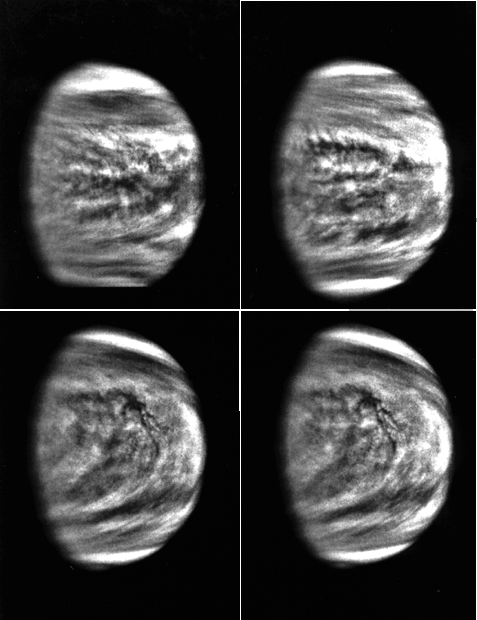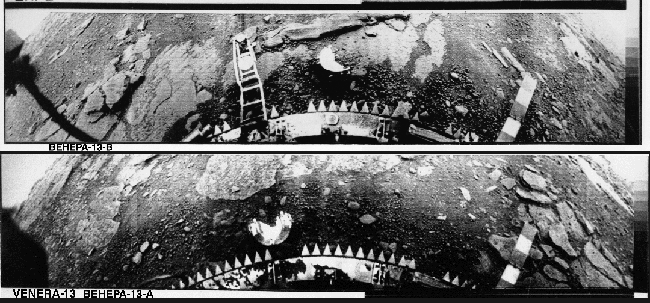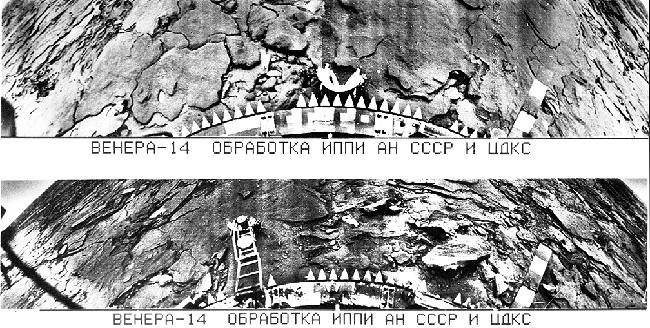- Mercury
- Mercury is so dense that its origin is hard to explain. One solution is to assume a massive impact tore most of its crust away and left mostly the core. We believe that the Earth had a similar history, which accounts for the low-density Moon.
- Mercury has scarps, or fault lines, that may indicate that Mercury's crust has shrunk as it cooled.
- Mercury has a huge impact basin, the Caloris Basin--a monster impact.
- Venus
- Craters are rare, shallow and ejecta stay close to crater due to dense atmosphere. Surface is "new" -- only 1 billion years old.
- Volcanoes are common.
- Pancake domes are a unique feature of Venus.
- Earth
- Mars
Only one spacecraft, Mariner 10, visited Mercury as a flyby (but with three passes). Here are some images from the mission: A major new US mission to Mercury is slated for launch in 2004. Read all about Mercury in Mercury Unveiled. Key points to learn are:
One can learn something about the surface composition by looked at spectral colors.
Venus appears completely cloud covered. Swirling wind patterns can be seen in the clouds, as shown in the photos from Galileo, below:

Images from Galileo 1 day apart, except the bottom two
images were taken 2 hours apart. Note that the clouds
are lagging behind at the equator, and the patterns move
right to left in the figure. The temperate zones have the
equivalent of Jet streams.
The clouds trap allow some visible light through, but trap infra-red light due to the presences of greenhouse gases in the atmosphere. This makes the surface temperature a whopping 700 K! Russia landed several landers on the surface, as shown in the accompanying images. The temperature and pressure conditions were so high that the landers survived only a few hours, despite their diving bell construction.

Venera 13 Lander images

Venera 14 Lander images
Images of Venus' surface features were obtained with the Magellan spacecraft, using a radar mapper to see through the clouds.
We hardly need to show you pictures of the Earth, but in a moment we will contrast Earth with the other terrestrial planets. Features of Earth are that it has water(!), clouds in the atmosphere, very few craters, many volcanoes due to plate tectonics.
Mars has been visited by more spacecraft than any other planet (other than Earth). The latest orbiter is Mars Global Surveyor. Here are some images from that spacecraft. Mars has polar caps, a (thin) atmosphere, clouds, snow, water (very little above the surface) -- so it has many characteristics like Earth. Three new spacecraft (all landers) arrived in Dec. 2003 and Jan. 2004. The ESA Beagle has not been heard from. However, the NASA Spirit and Opportunity rovers are working fine, and looking for signs of water-related geology.
